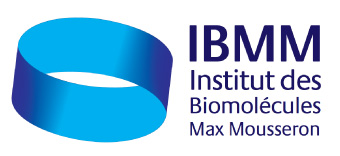Liquid structure of a water-in-salt electrolyte with a remarkably asymmetric anion
Séminaire Chimie ED459
Dr. Olga
Le Vendredi 07 Octobre 2022 à 10h
ENSCM, salle de cours SDC 8 (campus Balard, 240 av. Émile-Jeanbrau — aile C, 2e étage / escalier face amphi Godechot)
Date de début : 2022-10-07 10:00:00
Date de fin : 2022-10-07 11:30:00
Lieu : ENSCM ENSCM salle SDC 8 (campus Balard, 240 av E. Jeanbrau, aile C 2e étg)
Intervenant : Dr. Olga
Dipartimento di Chimica, Sapienza Università di Roma, Italie
The Laboratory of Physical Chemistry of Sustainable Solvents (PCS2) is a component of the Chemistry Department at the Sapienza University of Rome. Its activity concentrates on the exploration of chemical physical properties of complex liquid systems, exploiting the synergy and complementarity of experimental and computational techniques, leading to the advance in knowledge on the relationship between microscopic features and bulk performances, with a focus on sustainability. Recently, we focused the attention on ionic liquids, deep eutectic solvents and non-conventional electrolytes.
Water-in-salt (WIS) systems, i.e. super-concentrated aqueous electrolytes, such as lithium bis(trifluoromethanesulfonyl)imide 21 mol/kg(water), have been recently discovered to perform unexpectedly large electrochemical windows and high lithium transference numbers, thus paving the way to safe and sustainable charge storage devices. [1,2] The peculiar transport features in these electrolytes are influenced by their intrinsically nano-separated morphology, stemming from the anion hydrophobic nature and manifesting as nano-segregation between anions and water domains. The underlying mechanism behind this structure-dynamics correlation is however a matter of strong debate, yet. We enhance the apolar nature of the anions, exploring the properties of the aqueous electrolytes of lithium salts with a strongly asymmetric anion, namely (trifluoromethylsulfonyl)(nonafluorobutyl sulfonyl) imide. Using a synergy of experimental and computational tools, we detect a remarkable level of structural heterogeneity at mesoscopic level, between anion-rich and water-rich domains. Such a ubiquitous sponge-like, bicontinuous morphology develops across the whole concentration range, evolving from large fluorinated globules at high dilution to a percolating fluorous matrix intercalated by water nano-wires, at super-concentrated regimes. Even at the extremely concentrated conditions, a large population of fully hydrated lithium ions, with no anion coordination, is detected. One can then derive that the concomitant coexistence of i) a mesoscopically segregated structure and ii) fully hydrated lithium clusters disentangled from anion coordination enables the peculiar lithium diffusion features that characterise water-in-salt systems.
These results were recently published.[3]
(see illustration in attached PDF abstract)
References
1. L. Suo, O. Borodin, T. Gao, M. Olguin, J. Ho, X. Fan, C. Luo, C. Wang, K. Xu, “Water-in-salt” electrolyte enables high-voltage aqueous lithium-ion chemistries, Science 2015, 350: 938–943. https://doi.org/10.1126/science.aab1595
2. Y. Yamada, J. Wang, S. Ko, E. Watanabe, A. Yamada, Advances and issues in developing salt-concentrated battery electrolytes, Nat. Energy 2019, 4: 269–280. https://doi.org/10.1038/s41560-019-0336-z
3. A. Triolo, V. Di Lisio, F. Lo Celso, G.B. Appetecchi, B. Fazio, P. Chater, A. Martinelli, F. Sciubba, O. Russina, Liquid structure of a water-in-salt electrolyte with a remarkably asymmetric anion, J. Phys. Chem. B. 2021, 125: 12500–12517. https://doi.org/10.1021/acs.jpcb.1c06759
Contact local ICGM : Dr. Peter
